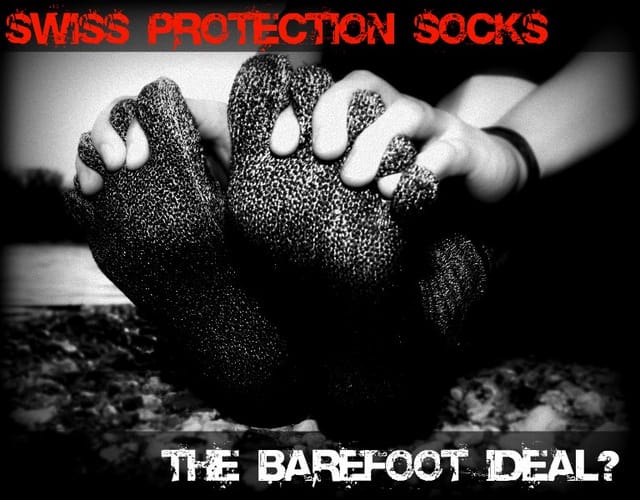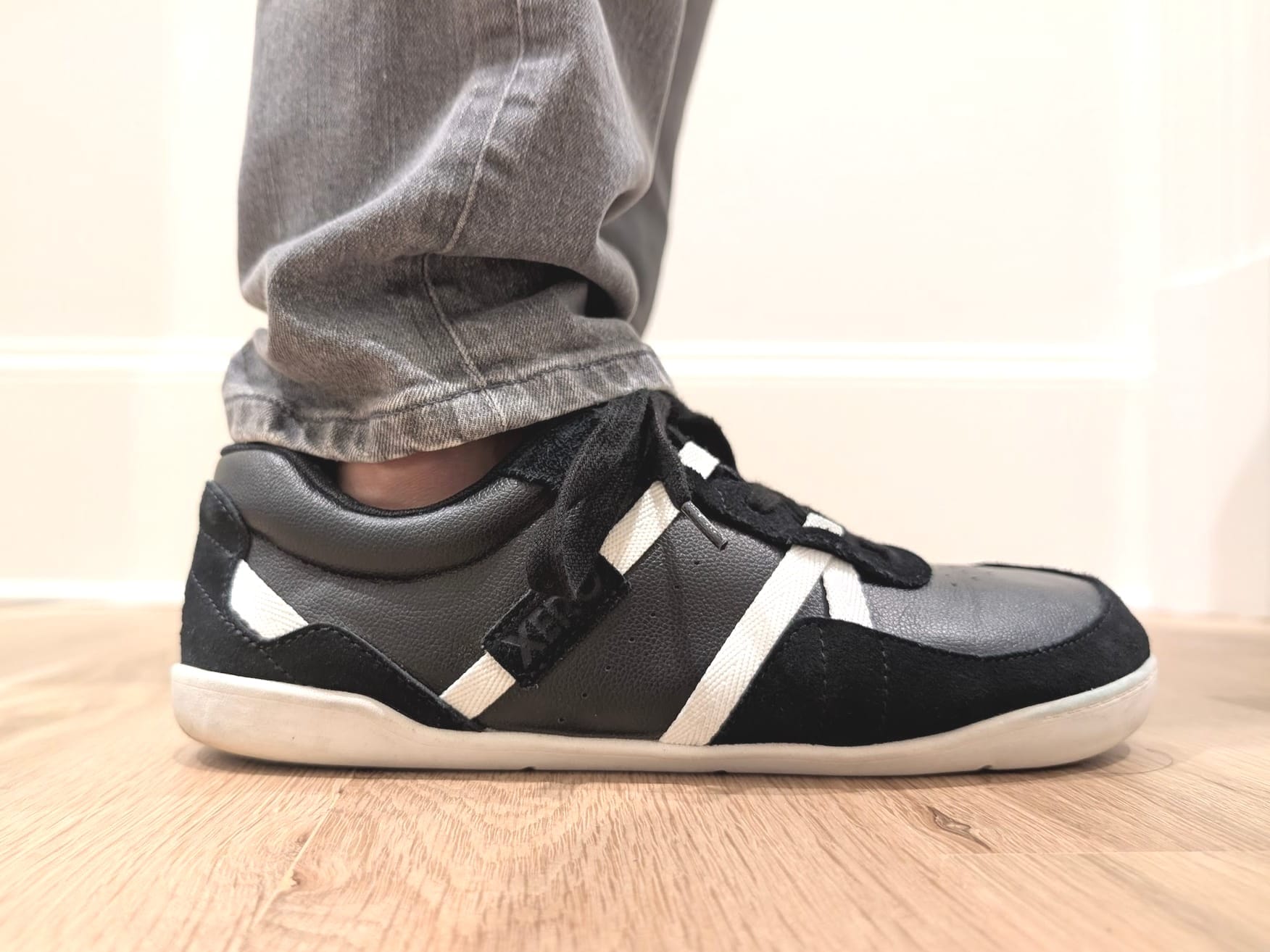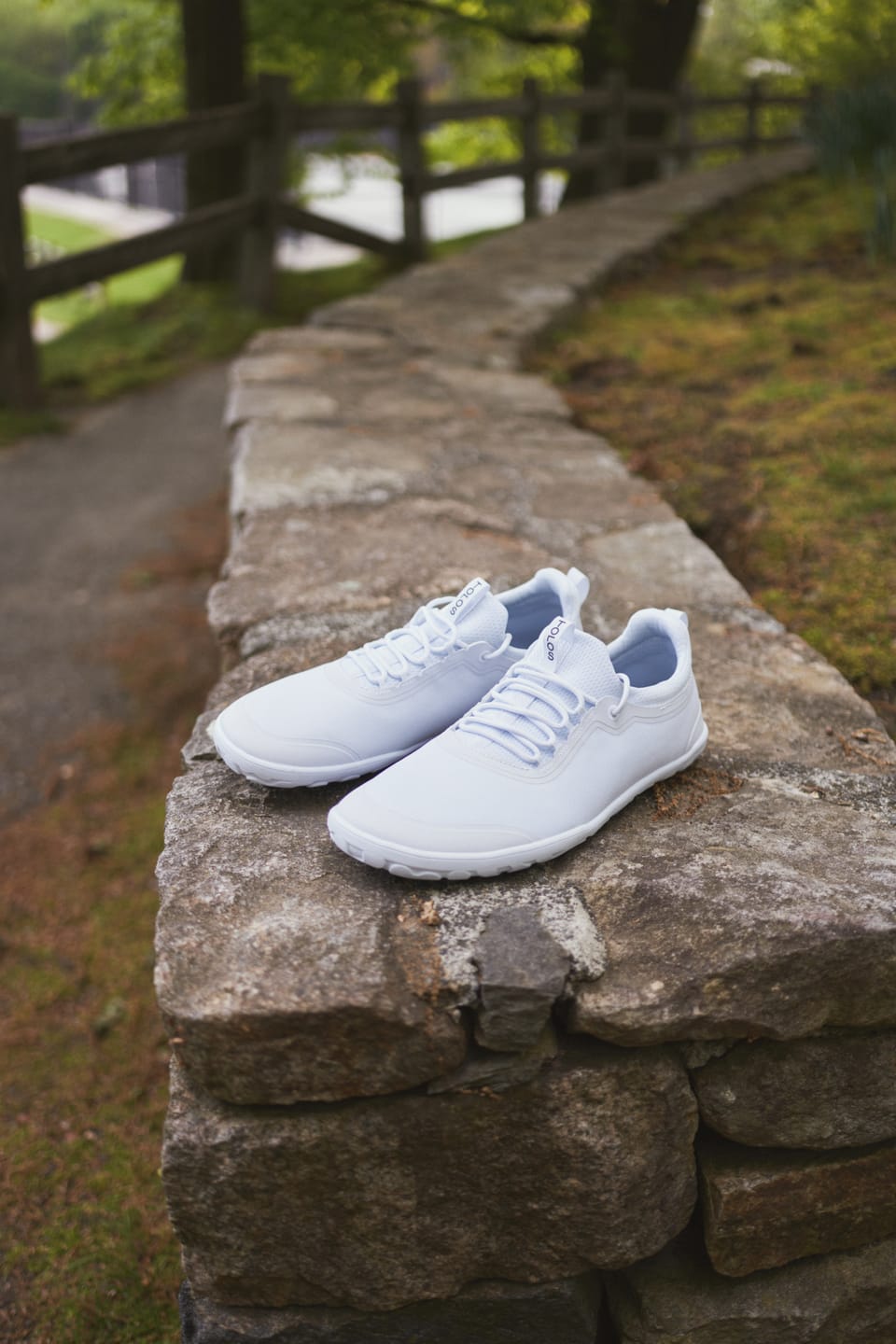Swiss-Made Toe Socks to Evolve Toe Shoe Concept?
A number of readers have emailed in about Swiss Barefoot Company's "Swiss Protection Sock," a five-toed sock made of 50% Kevlar, 32% polyester, 8% spandex, and 10% cotton is cut resistant but, being made out of fabric, will get you even closer to barefo…

A number of readers have emailed in about Swiss Barefoot Company's "Swiss Protection Sock," a five-toed sock made of 50% Kevlar, 32% polyester, 8% spandex, and 10% cotton that laminated with "naps" of "eco-friendly" PVC that makes it cut resistant. It's touted as providing "absolute" or "perfect" barefoot feeling, presumedly because it's mostly just a sock. It sounds almost too good to be true.
The socks come in two versions, one of which (at least) is emblazoned with a Swiss cross cast in the red knitted fabric. Both of them are going to set you back a pretty penny (for a pair of socks, anyway) — upwards of $80 USD (59 EUR).
Video, pictures, and a few thoughts after the jump!
The Swiss Barefoot Protection toe socks have a pretty awesome marketing video that is worth the watch (after the jump) — just try not to get too excited listening to a voice overlay spoken by a German-accented man (I can't help but picture some Swiss scientist). It just screams "it's made in Switzerland, it has to be awesome."
Am I wrong?
Providing the barefoot feel of a pair of socks with cut-stopping protection from Kevlar and PVC; well, the Swiss Protection Socks sound like the best things for bare feet since, well, toe shoes. Or huaraches if toe shoes aren't your thing ... whatever is your preference in barefoot-minded/minimalist footwear inventions.
I want to try a pair and see how they function. What does "absolute" barefoot feel in a pair of socks feel like? How do they hold up against wear Will a stick or twig puncture the knitted soles?
If these toe socks are as tough as they're made out and possess supreme ground feel due to their use of fabrics instead of rubber (though PVC isn't typically very malleable), then these could be the "most barefoot" you can get while still having an element of protection from the odd sharp rock or broken glass you might overlook that might otherwise sever your foot in two (I'm joking).
In all seriousness, I wonder what the right compromise is between minimalist footwear and full-monty barefootedness. Is an "absolute" barefoot experience best? What does that mean, anyway, if you're still wearing shoes? Or put another way, why are you wearing shoes if it's an absolute barefoot feel? What if you had footwear that perfectly preserved ground feel while adding an infinite amount of protection against abrasions or cuts? Would those be the ideal?
These aren't easy questions to answer — shoes are basically tools that are designed to add some element that feet lack (protection being, perhaps, the most commonly cited need, but insulation, water-resistance, and sometimes cushion also seem to be on the list). Of course, most of the time, with every shoe "feature," you lose some innate power of the bare foot. Are these toe socks the future of barefoot shoes? Again, what is that ideal footwear? Or is the answer more simply: it depends.
I'm a little skeptical of simple solutions to complex problems; and the human foot is pretty awesomely complex. I digress.
Here are some photos of the Swiss Protection Socks from the Swiss Barefoot Company's website.
Anyone have these? Based on what you're reading about these puppies, what do you think about them?




